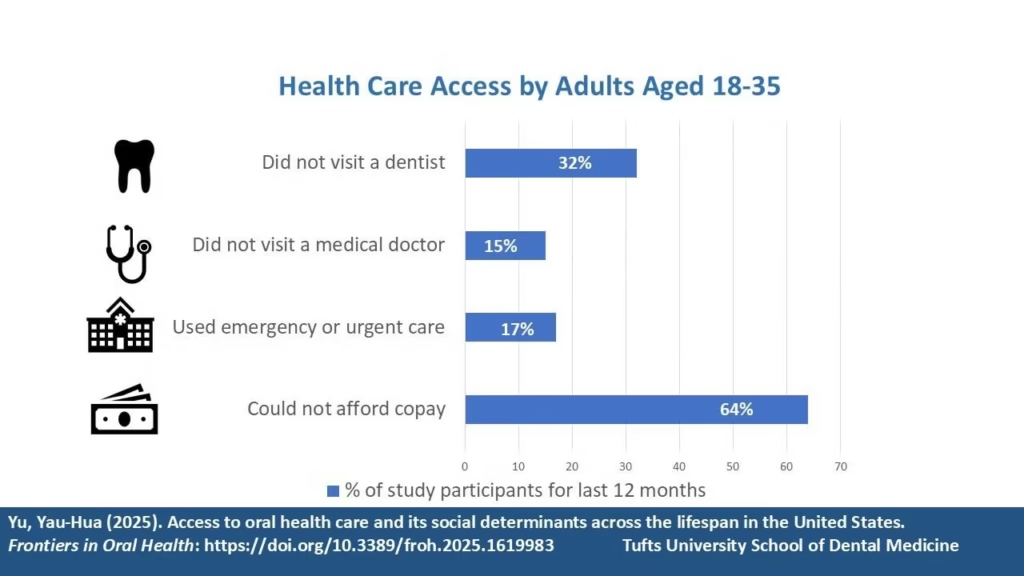Did you know that your smile isn’t just about aesthetics—it’s a gateway to overall health? Poor oral health has been linked to everything from heart disease to diabetes, yet millions of Americans struggle to access routine dental care. A recent study published in Frontiers in Oral Health sheds light on this issue, revealing how social determinants of health (SDOH) like income, housing stability, and insurance coverage create barriers that vary dramatically across different life stages. Drawing from the massive All of Us Research Program dataset, the research analyzes over 127,000 adults to highlight inequities that hit young adults the hardest. Let’s dive into what this means for us all.
The Study at a Glance: A Lifespan Approach to Oral Health Inequities
Led by researcher Yau-Hua Yu from Tufts University School of Dental Medicine, this cross-sectional study used data from the National Institutes of Health’s All of Us program—a diverse cohort aiming to include one million Americans, with a focus on underrepresented groups. Participants aged 18 and older completed surveys on basics like demographics, overall health, and healthcare access. The researchers stratified the data by age groups (18-35, 36-45, 46-55, 56-65, and 66+) and income levels to explore how SDOH influence whether people saw a dentist in the past year.
Rather than just looking at direct links between dental visits and health issues, the study contextualizes access within broader social and health challenges. It draws on frameworks like the Social Ecological Model and the World Health Organization’s SDOH to examine factors at individual, interpersonal, organizational, community, and policy levels. Key variables included education, marital status, employment, housing conditions, insurance status, and self-reported mental and physical difficulties.
Key Findings: Young Adults Bear the Brunt, But Disparities Span Generations
The results paint a stark picture of inequality. Overall, about 32% of young adults (18-35) hadn’t seen a dentist in the past year—the highest rate among all groups. This cohort also reported the worst mental health outcomes: nearly 30% rated their mental health as fair or poor, and over 31% experienced frequent emotional problems like anxiety or depression. They were more likely to skip medical doctor visits (18%), worry about affording copays (69%), and rely on emergency or urgent care (20%).

Why? Social factors play a huge role. Multivariate analysis showed that no insurance coverage increased the odds of skipping dental care by 67%, while an annual income under $35,000 tripled those odds (OR=3.79). Housing instability added another 38% risk. These barriers were consistent across ages but most pronounced in youth, where renters, low-income earners, and the uninsured dominate.
What This Means: From Personal Struggles to Policy Imperatives
This makes sense, as when you are young, if you don’t have great finances, you tend to neglect your teeth, except to brush them. And you don’t need to get a cleaning very badly, you don’t have gum disease, and you don’t see the dentist unless you have a toothache. Not having money makes it very hard to see the dentist, as it is an expensive ordeal.
This happened to me as a young man in college. I didn’t see the dentist for a period of a few years, at least. I brushed my teeth fairly regularly (?) but it probably wasn’t twice a day. And I had bad teeth and some big fillings, some of them in my teeth since I was 6 years old, or in my 12 year molars even.
On a broader social scale these findings underscore that oral health isn’t isolated—it’s intertwined with life’s broader challenges. For young adults, high mental health burdens and unstable living situations compound access issues, potentially setting the stage for lifelong health problems.
What Can You Do for Your Teeth?
It is nice and all to think of having dental coverage in your health insurance. And maybe that will happen. It will just make it even more expensive for everyone, but access will increase, too. Maybe adding dental plans to health insurance is already one reason why the costs are so high for cash pay individuals like me and for many young people.
But you need something now to help your teeth. Excellent home care must a greater priority. You can look at our complete guide to improve oral health. That would be a great way to take care of your teeth. Consider using Ora-Shield as part of your dental care. Many people have found that it fills in a gap in their home oral care program. Not only does it give you excellent fresh breath, but it balances the oral microbiome so that your gums are healthy, and it will likely reduce the number of cavities you get. Compared to going to the dentist Ora-Shield is a super bargain! And if you can’t afford a dentist, it makes even more sense to do all that you can to maintain your choppers in tip-top shape.


